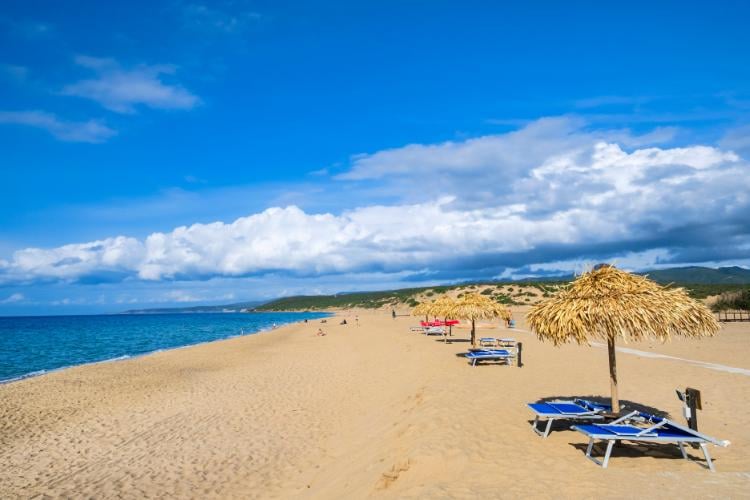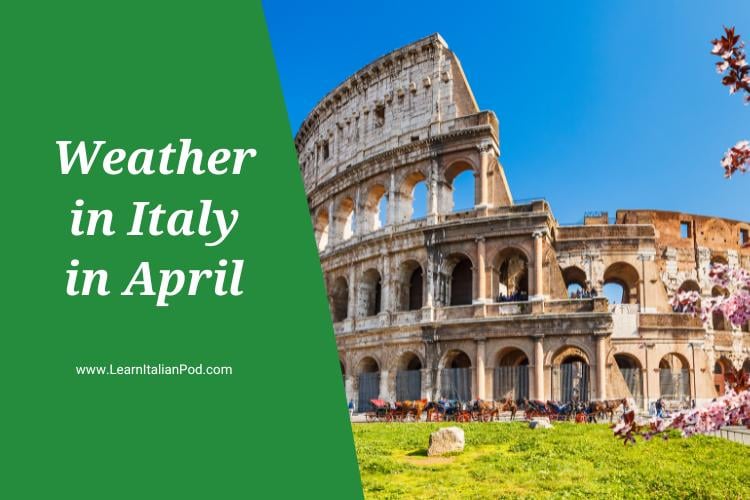How to Travel by Train in Italy: A Guide to Easy Rides

Buongiorno, train travel enthusiasts! This is Max, your conductor on the journey through Italy’s splendid landscapes! Are you wondering how to travel by train in Italy?
You’re on the right track! Let’s discover together how to traverse Italy’s beauty, all from the comfort of a train carriage.
Planning Your Itinerary
When planning a train itinerary through Italy, accurate scheduling and route selection are crucial for a seamless journey.
1. Major City Connections

Italy is home to some of Europe’s most iconic cities, including Rome, Florence, Venice, and Milan. When planning your travel to connect these hubs by rail, consider distance, regional attractions, and train frequencies.
- Rome to Florence: Approximately 1.5 hours on a high-speed train.
- Florence to Venice: Around 2 hours, perfect for a swift transition to the canals.
- Venice to Milan: It takes just under 2.5 hours to connect the city of Lagoon with the fashion capital.
2. Scenic Routes and Destinations

Creating an itinerary that enables leisure and exploration is essential for those planning to explore Italy’s rich history and culture.
- Cinque Terre: The Cinque Terre Express train runs from La Spezia to Levanto, linking all five coastal towns.
- Naples, Sorrento, the Amalfi Coast: Accessible from Rome with regional trains.
- Sicily: Longer journey with an overnight train option from Rome or Naples, including ferry crossing.
3. Planning Day Trips
- Pompeii is a popular day trip. The local Circumvesuviana or Campania express service makes it reachable from Naples in less than an hour.
- Layovers: Consider other picturesque towns like Siena or Lucca for short layovers.
4. Recommended Train Itinerary Sequence:
- Start in Rome for its ancient allure.
- Proceed to Florence, the cradle of the Renaissance.
- Head north to Venice to experience its enchanting canals.
- Conclude in Milan, intertwining history with modern sophistication.
Faster high-speed trains (Frecciarossa, Italo) are one of the most efficient ways to travel quickly between cities. Regional services offer a more scenic, albeit slower, journey. Let’s explore the train types in Italy.
Suggested Read: 35 Best Travel Guide Books for Italy to Read
Understanding Train Types in Italy
In Italy, trains are categorized based on their speed, the distances they cover, and their primary use. Grasping the differences between these train types is essential for travelers looking to navigate the Italian rail network efficiently.
1. High-Speed Trains (Trenitalia, Italo)

Operated by Trenitalia and Italo, high-speed trains can reach speeds over 300 km/h, significantly cutting travel time between Italian cities.
Trenitalia
Trenitalia, the country’s main train operator, is a joint venture between the Italian government and a consortium of private investors. It manages the renowned “Frecce” trains.
- Frecciarossa, or ‘Red Arrow,’ is Trenitalia’s premier high-speed service. It connects major cities like Rome, Milan, and Florence with frequent daily services.
- Frecciargento, or ‘Silver Arrow,’ reaches locations that are not accessible by the Frecciarossa trains.
- Frecciabianca, or ‘White Arrow,’ covers long-distance routes at high speeds but not as rapidly as the Frecciarossa or the Frecciargento.
Italo
Italo is a private high-speed train service that offers a competitive option to Trenitalia’s Frecciarossa. Its focus is on passenger comfort and amenities.
2. Intercity Trains
Intercity trains bridge the gap between faster trains and regional services. They cover longer distances with fewer stops than regional trains.
3. Regional Trains
Regional trains connect local destinations within Italian regions. They make frequent stops and offer an economical way to travel short distances.
Purchasing Train Tickets

When traveling by train in Italy, you have various options for purchasing tickets, from online platforms to ticket machines at stations.
As tickets can become available 3 to 6 months before travel, booking your train in advance is often recommended to secure availability, especially for popular routes.
Online Ticketing
Passengers looking for convenience can purchase Italian train tickets online. Websites like Trenitalia or Trainline offer a user-friendly interface where one can check schedules and buy tickets. After purchasing, you’ll typically receive an e-ticket, which can be printed or displayed on a smartphone.
Buying Tickets in Advance
Securing train tickets in advance is advisable, particularly for faster trains or long-distance travel, where reservations are mandatory. Purchasing in advance can also lead to better prices and guaranteed seating.
Ticket Machines at Stations

Italian train stations are equipped with ticket machines, which allow passengers to buy tickets quickly on the day of travel.
These machines, available in multiple languages, accept credit cards and cash. It’s essential to validate the ticket at the small machines on the platform before boarding.
Traveling Without Reservations
For regional trains, it’s possible to travel without a reservation. In this case, you can buy tickets at station ticket machines or counters shortly before departure. However, you should be aware that without a reservation, a seat is not guaranteed if the train is full.
Ticket Pricing and Fares

Fare structures in Italy are categorized by train type and class. Ticket costs vary depending on the speed of the train, the class of service, and the route distance.
Regional trains are the most economical option, often with fixed prices that do not fluctuate with demand.
Intercity and faster trains like the Frecciarossa or Italo offer variable pricing structures, similar to airlines, where fares increase as the departure time nears or during peak travel periods.
| Train Type | Details | Pricing Strategy |
|---|---|---|
| Regional | Slower, stops frequently | Generally fixed |
| Intercity | Faster, fewer stops | Mid-tier, semi-flexible |
| High-Speed | Fastest, limited stops | Dynamic pricing |
Once again, you can save money by booking advance tickets, as last-minute fares tend to be more expensive. The most affordable base fare train tickets in Italy, known as Super Economy tickets, are available for early purchase and do not permit any modifications or cancellations.
Discounts for Children and Youth
Children typically receive discounts, with some rail operators offering heavily discounted or even free travel for children under a certain age when accompanied by an adult. Specifically:
- Children under three years old travel free on Italo trains if seated on an adult’s lap.
- Children aged 4 to 15 years (or up to 12 years on regional trains) benefit from a 50% fare reduction on Trenitalia.
- The Carta Verde (Green Card) is a special discount card designed for youths aged 12 to 26. A yearly plan costs 40 euros.
Discounts for Seniors
Seniors may also be eligible for reduced fares, but these offers can vary between train operators.
They have the option to purchase Trenitalia’s Carta d’Argento (Silver Card) for €30 annually, which is available to individuals aged 60 to 75 and complimentary for those over 75. Additionally, Italo provides a 40% discount to senior passengers on select fares.
Travel Italy by Train: Using a Rail Pass

Rail passes like Eurail offer travelers an efficient and cost-effective way to explore Italy by train. Passholders can enjoy flexible travel and often receive discounts on local transportation.
Purchasing a Rail Pass
To use a rail pass in Italy, one must purchase it before arriving, as they are not available for sale within the country. There are various types of Eurail passes to choose from:
- Italy Pass: Unlimited travel within Italy.
- Global Pass: Unlimited travel in 33 European countries.
Validity Periods
Eurail passes are valid for different lengths of time, ranging from days to months, and can be flexi-passes (a set number of travel days within a longer period) or continuous passes (unlimited travel within the validity period).
Train Reservations
While many Italian trains do not require reservations, high-speed and overnight trains often do. Passholders are advised to book these in advance, paying a reservation fee.
Benefits and Discounts
Eurail pass holders may receive:
- Access to ferries and buses.
- Reduced rates on private railways and local transit.
- Discounts on certain hotels and attractions.
Using the Pass
When using a Eurail pass, you must:
- Activate the pass at a train station in Italy.
- Write the date of travel on each travel day.
- Show the pass along with a passport when requested by train staff.
Tips for a Smooth Journey
- Check schedule changes: Train schedules can vary, especially on public holidays.
- Keep your pass safe: Lost or stolen rail passes are like losing cash and can be costly to replace.
- Understand pass limitations: The rail pass does not cover all trains and routes.
Finding and Navigating Train Stations

Locating a train station often involves looking for the well-marked sign “Stazione,” which makes it easy to identify.
Main train stations across the country are uniquely named, with the most common including Milano Centrale, Venezia Santa Lucia, Bologna Centrale, Firenze Santa Maria Novella, Torino Porta Nuova, Roma Termini, and Napoli Centrale.
Once at the station, timetables are prominently displayed, providing travelers with up-to-date schedules for all departing and arriving trains.
An essential first step is to identify your departure platform (binario), which is listed alongside your train number and target location.
| Key Locations in Stations | Description |
|---|---|
| Biglietteria (Ticket Office) | The place to purchase or collect pre-booked tickets |
| Tabella degli Orari (Timetable) | Displays times and platforms for arrival/departure |
| Sala di Aspetto (Waiting Area) | Seating before boarding, often with electronic boards |
| Binario (Platform) | Where travelers board the trains |
Navigating Italian train stations requires attention to detail: signs indicate platform (binario) numbers, directions, and facilities.
Station staff is usually on hand to assist in case of confusion; they can be found wearing uniforms at information desks or throughout the station.
For those unfamiliar with Italian, announcements and station signs are often available in English, especially in main stations and tourist-heavy areas.
Suggested Read: 135 Basic Italian Phrases for Travel: PDF Cheat Sheet
Train Schedules and Frequency

When traveling by train in Italy, passengers find punctuality and frequency to be critical aspects of the experience. Italian trains typically adhere to a regular schedule designed to cater to frequent intercity connections and less frequent regional services.
Intercity and High-Speed Trains:
- As mentioned earlier, Frecce trains primarily serve the major routes connecting main cities such as Turin, Milan, Venice, Bologna, Florence, Rome, Naples, and Bari. The table below represents their standard frequency.
| Service | Frequency |
|---|---|
| Frecciarossa | Up to every 30 min |
| Frecciargento | Hourly Connections |
| Frecciabianca | Several per Day |
Regional Trains:
- Regional trains, or treni regionali, typically run less frequently, especially in more rural or less populated areas. Schedules for these services may vary from one train every few hours to a more consistent hourly basis.
Train schedules are available online, at stations, and through various mobile apps. They are routinely updated to reflect changes due to maintenance works or seasonal adjustments. You are encouraged to check the Trenitalia or Italo websites for the most accurate train schedules.
Pre-Train Departure Procedures
Before boarding a train in Italy, you must follow several key steps to ensure a smooth journey. Validating tickets, locating the correct train and carriage, and handling luggage properly are all integral parts of the pre-departure process.
Ticket Validation

Ticket validation is a crucial step in the pre-departure process. Typically, you must use the validation machines located at the station before boarding.
This process confirms the date and time of travel, preventing ticket re-use. Unvalidated tickets can result in fines, so you should ensure to complete this step before heading to the platform.
Finding Your Train and Carriage
Once tickets are validated, proceed to find their train and carriage. The train number and departure information are displayed on electronic display boards throughout the station.
Train number and departure time are the key details needed to locate the correct platform. Upon arriving at the specified platform, carriage numbers are visibly displayed beside train doors or on electronic displays along the platform.
Onboard Train Amenities and Services

Luggage Accommodations: Passengers are responsible for loading and unloading their own luggage on trains and can expect decent luggage storage on trains in Italy.
Overhead luggage racks are accessible for small luggage, while designated spaces at the ends of carriages are designed for larger suitcases.
Dining Options: Most long-distance and high-speed trains offer food and beverages. A dining car or a trolley service provides a variety of meals suitable for a range of tastes and preferences, including options for those with dietary restrictions.
Comfort and Accessibility: You will find modern comforts such as air conditioning and power outlets for charging electronic devices. Seats are designed to provide comfortable travel, with options for first or second class, each differing in space and services offered.
| Class | Seating Configuration | Power Outlets | Wifi Availability |
|---|---|---|---|
| First Class | Spacious seating | Yes | Yes |
| Second Class | Standard seating | Sometimes | In selected trains |
The Truth About Train Travel Classes: What Really Matters
Deciding between first class and second class for your train ticket? The differences are minimal, primarily in dining options.
First Class (also called Executive Class) often includes food service, whereas Second Class might only have a vending machine (or nothing at all).
Both classes on fast trains like Italo and Frecciarossa offer comfort, making an upgrade optional. For a quieter journey, consider a first-class silent car with restricted cell phone use, ensuring a serene trip to your Italian locale.
Accessibility and Traveling with Children

When taking a train trip through Italy with children, one can anticipate a safe and comfortable experience.
Italian transportation law mandates accessibility for all, ensuring that train stations and carriages cater to the needs of travelers with disabilities.
For Parents and Guardians:
- Documents: Children, including infants, require their own travel documents, such as passports.
- Expectations: Train travel can be lengthy; pack snacks, toys, and entertainment to keep young travelers content.
Travelers with Disabilities:
- Facilities: Most train stations offer wheelchair accessibility, including restrooms and ticket counters. Always verify in advance the level of accessibility available, as not all trains and stations may be equally equipped.
- Assistance: It is advisable to contact the train company ahead of time if specific assistance is required.
While Onboard:
- Seating: Look for priority seating, which is typically available for those with reduced mobility or those traveling with young children.
- Safety: Keep children supervised, especially when boarding or disembarking the train.
Traveling with Infants:
- Healthcare: If you have any health-related concerns, such as dehydration in infants or young children with diarrhea, seek immediate medical attention. Remember to maintain adequate hydration as a key element of travel health management.
Connecting Transports and Transfers
When traveling by train in Italy, passengers can enjoy seamless connections to various modes of transportation upon arrival at their destination station.
This section outlines the transition from trains to buses, station taxi services, and car rental options.
Taxi Services at Stations

Train stations, especially at major urban centers, are equipped with designated taxi areas. Taxis are a reliable option for direct transfers to a final destination, with clearly marked ranks and regulated fares. You should look for officially licensed, usually white taxis, and display a taxi sign.
From Train to Bus
At most Italian train stations, bus terminals are nearby or directly adjacent to the station. These buses serve local urban routes and suburban areas not covered by rail services. Timetables are typically synchronized with train arrivals, facilitating hassle-free transfers.
Car Rentals
For those requiring flexibility or planning to visit areas less accessible by public transport, car rental services are available at key train stations.
Rental desks are often located within or just outside the station. Renting a car in advance is advisable to ensure availability and potentially secure better rates.
Suggested Read: Traveling to Bologna and planning to rent a car? Read Renting a Car in Bologna: Your Essential Guide.
Overnight and Long-Distance Trains
Overnight and long-distance trains efficiently traverse the expansive Italian countryside and coastal regions, connecting cities like Rome, Venice, and Milan to lesser-known locations.
Overnight trains, such as Trenitalia’s Intercity Notte, provide sleeper cabins and couchettes, allowing you to rest and arrive refreshed at your destination. Comfort varies by train type and class, with options usually including:
- Sleeper cabins: Private compartments with beds.
- Couchettes: Shared compartments with bunk beds.
When you consider it, traveling overnight this way is not only a time-saver but often a cost-effective alternative to hotels. You awaken to new landscapes, having covered significant ground during the night.
Italo and Frecciarossa services present options for long-distance travel, shrinking the travel time between cities. Itineraries are straightforward, and stations are well-connected, making train travel a prime choice for those seeking efficiency.
Popular Train Routes

Italy’s train network offers an extensive range of routes connecting major cities and scenic destinations efficiently and comfortably. Below are some of the most recommended train routes in Italy:
Rome to Florence: This route connects Italy’s capital with the heart of Tuscany. A high-speed train ride lasts about 1.5 hours on the Frecciarossa or Italo, making a day trip feasible.
Rome to Milan: Traversing the length of Northern Italy, the journey from Rome to Milan takes approximately 3 hours via faster train—ideal for business travelers or tourists.
Rome to Naples: A beloved route for travelers seeking the allure of the Amalfi Coast and historical sites such as Pompeii, Rome to Naples only takes roughly 1 to 1.5 hours on the fastest services.
Train Routes Table:
| Route | Duration | Service Type | Scenic Views |
|---|---|---|---|
| Rome to Florence | ~1.5 hours | High-speed | Tuscan countryside |
| Rome to Milan | ~3 hours | High-speed | Tuscan countryside and northern landscapes |
| Rome to Naples | ~1-1.5 hours | High-speed | Vesuvius and coastline |
For an enriching travel experience, consider stops in smaller towns or detours along the way to fully appreciate regional diversity.
Certain local and regional train lines are favorites among international tourists, such as the journeys from Florence to Cinque Terre or Siena and the trips from Rome to Salerno or Sorrento along the Amalfi Coast.
Suggested Read: Craving a voyage along the Italian coast after your train adventure? Read 12 Top Cruise Ports in Italy: A Mediterranean Journey.
Tips for an Enjoyable Train Experience
It may seem like common sense, but it bears mentioning: for the best train travel experience, you should:
- Arrive early: Arrive at the station at least 30 minutes before departure to find platforms and settle in without rushing.
- Pack light: Travel with minimal luggage for ease of movement within stations and onboard trains.
- Keep documents handy: Always have your passport and ticket accessible for inspections.
| Items to Keep Accessible | Reason |
|---|---|
| Passport | Identification |
| Tickets | Boarding and inspections |
| Water and Snacks | Comfort during the journey |
Understanding the rail system is key when planning to travel to Italy by train. Familiarize yourself with the different types of trains and select the one that best suits your travel needs and budget.
Traveling During Peak Seasons
Peak times typically include summer months, especially August, and key holidays such as Easter and Christmas.
Schedules: During these periods, train schedules are often more crowded, and ticket availability may be limited. It is crucial for travelers to book their tickets well in advance.
Holidays: As Italian holidays approach, train stations become hubs of activity. Locals and tourists alike tend to travel to their holiday destinations, which can significantly impact train capacity and punctuality. The increased demand during holidays may lead to higher ticket prices and longer transit times.
Staying Safe and Secure
When exploring Italy via rail, safety should be a top priority. Remain vigilant, especially in crowded stations or on busy trains. Personal belongings should be kept secure at all times to prevent theft. Utilizing anti-theft bags or waist packs can be beneficial.
Here is a concise breakdown of safety measures:
- Personal Belongings: Keep these items out of sight and secure to avoid attracting attention.
- Awareness: Stay alert to your surroundings.
- Health Safety: Train travel during certain health events may require additional precautions, like wearing a mask if necessary. Don’t forget to sanitize or wash your hands frequently.
- Emergency Contacts: Keep a list of emergency contacts, including local police, your country’s embassy or consulate (U.S. Embassy & Consulates in Italy), and family members.
Frequently Asked Questions

This section answers common queries about train services, ticketing options, and travel tips to ensure a smooth journey.
What are the most recommended train services to use within Italy?
Italy’s primary train service provider, Trenitalia, offers extensive routes connecting major cities and regions. It is renowned for punctuality and efficient service. Another notable option is Italo, which is known for its faster trains and modern amenities.
What options are available for purchasing train tickets in Italy?
Train tickets for trips in Italy can be purchased online, through mobile apps, at ticket machines, or train station ticket counters. Purchasing tickets in advance is recommended, especially for long-distance travel, to secure the best fares.
Can travelers buy unlimited train passes for Italy, and what are the options?
Travelers can opt for the Eurail Italy Pass or the Interrail Italy Pass, which offers unlimited travel within Italy for a set number of days. These passes provide flexibility and can be cost-saving for tourists planning to visit multiple locations. I invite you to read this excellent article by Rick Steves about Italian rail passes.
How far in advance should I purchase my train tickets?
For smoother Italian train travel, booking your tickets 3 to 6 months ahead, particularly for busy routes, is advisable to ensure you get a seat.
What should one know about managing luggage during train travel in Italy?
Passengers are usually allowed to bring luggage on Italian trains without an extra fee. Storage areas are available at the ends of carriages or above seats. Still, passengers should monitor their belongings, as train stations and trains are public spaces.






